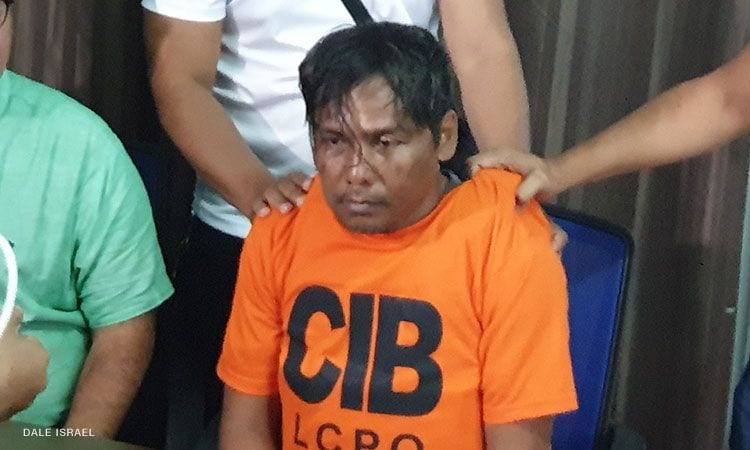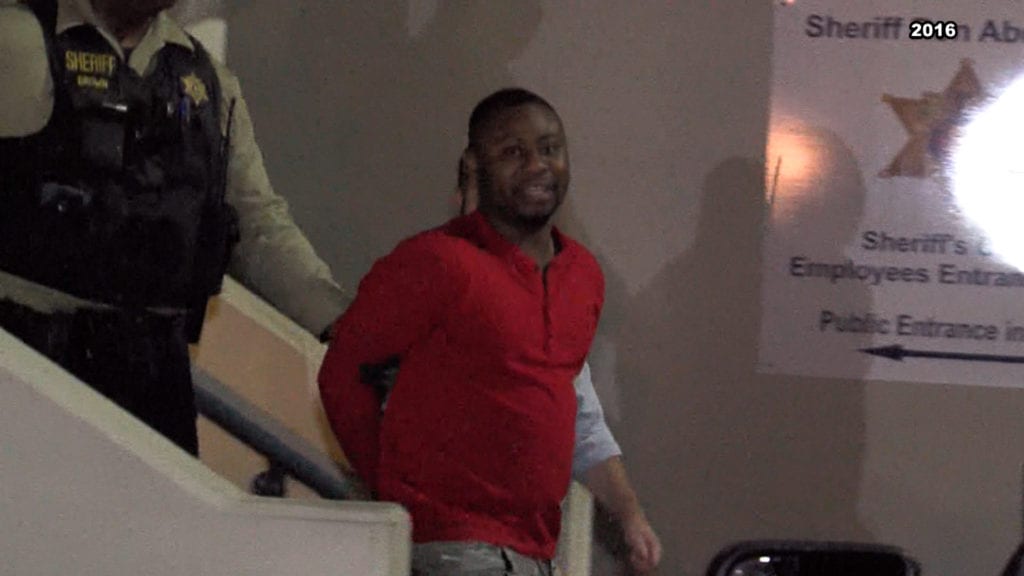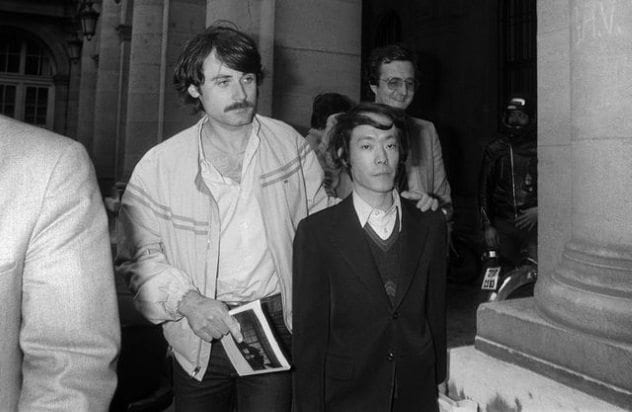 Mysteries
Mysteries  Mysteries
Mysteries  History
History 10 Surprising Stories About the Texas Rangers
 Humans
Humans 10 Philosophers Who Were Driven Mad by Their Own Theories
 Miscellaneous
Miscellaneous 10 Video-Game-Worthy Weapons and Armors from History
 Weird Stuff
Weird Stuff 10 Psychics Who Accurately Predicted Wartime Events
 The Arts
The Arts 10 Pieces of Art Inspired by a Broken Heart
 Health
Health 10 Science Fiction-Sounding New Medical Treatments
 History
History 10 Surprising Facts About the Father of Submarine Warfare
 Space
Space Ten Astonishing New Insights into Alien Worlds
 Weird Stuff
Weird Stuff 10 Bizarre Summer Solstice Rituals Still Practiced Today
 Mysteries
Mysteries Top 10 Haunting Facts About the Ghost Ship MV Alta
 History
History 10 Surprising Stories About the Texas Rangers
 Humans
Humans 10 Philosophers Who Were Driven Mad by Their Own Theories
Who's Behind Listverse?

Jamie Frater
Head Editor
Jamie founded Listverse due to an insatiable desire to share fascinating, obscure, and bizarre facts. He has been a guest speaker on numerous national radio and television stations and is a five time published author.
More About Us Miscellaneous
Miscellaneous 10 Video-Game-Worthy Weapons and Armors from History
 Weird Stuff
Weird Stuff 10 Psychics Who Accurately Predicted Wartime Events
 The Arts
The Arts 10 Pieces of Art Inspired by a Broken Heart
 Health
Health 10 Science Fiction-Sounding New Medical Treatments
 History
History 10 Surprising Facts About the Father of Submarine Warfare
 Space
Space Ten Astonishing New Insights into Alien Worlds
 Weird Stuff
Weird Stuff 10 Bizarre Summer Solstice Rituals Still Practiced Today
10 Killers Who Got Off On Technicalities
In a perfect world, a person who kills another would head off to prison, and never again see the light of day. That would be ideal, but we don’t live in a perfect world, and most legal systems are complex systems of loopholes, rules, and regulations, leaving some people to slip through the cracks.
See Also: Top 10 Sick And Twisted People Who Were Allowed To Go Free
Whenever a person is released early or gets off on their alleged crimes due to a technicality, society takes a hit. The best way to keep this from happening is to find these cracks in the system, and patch them, so people like these ten don’t walk free after (allegedly) killing someone.
NOTE: Many of these examples describe suspects and allegations of murder, but without conviction, it is impossible to say with 100% certainty, they are guilty of murder.
10 Derrick Hernandez—Didn’t Get A Speedy Trial

In 2014, Derrick Hernandez was picked up by the Honolulu Police for the fatal stabbing of a man at a Maili beach park. Hernandez awaited trial for five years, before he was finally let go in 2019 with his charge of second-degree murder dropped by the prosecution. An issue arose due to the continued delays in his trial, which violated his right to a speedy trial. The state of Hawaii had no option other than to release him and dismiss the charges because the prosecution took too long to begin his trial.
It wasn’t entirely the fault of the prosecutors, as you might think. Hernandez’s attorney, Ben Ignacio, discussed the charges, “I don’t think this is a situation of the prosecutors dropping the ball. I don’t think this is a situation of a judge making a wrong decision. An accumulate delay resulted, which was enough of a delay that the rules require that the case be dismissed.” Ultimately, the delays were the result of mental health treatment and other issues, which kept the trial from proceeding.
9 David Magnan—Native American Land

David Magnan drove to a home in 2004 with two accomplices and shot a man outside. Magnan went into the home, saw a man named James Howard, said “goodbye,” and shot him. Two other victims were shot in the assault, Karen Wolf and Lucilla McGirt, who died two weeks later from her injuries. Magnan was caught and pled guilty in court later that year to three counts of first-degree murder and one count of shooting with the intent to kill. He was sentenced to death by the state.
Unfortunately, the murders took place on Native American land, and legally, the state had no jurisdiction to prosecute Magnan for the murders. Magnan got his case seen by the 10th US Circuit Court of Appeals, which resulted in his conviction being overturned. He was released, under the pretense that he would be picked up by federal authorities who could try him for the murders. They did so; he was retried and sentenced to life 12 years after the killings took place. While he did end up going to prison for his crimes, he enjoyed a short period of freedom and avoided the death penalty due to a technicality.
8 Kamari Belmont—A Paperwork Error In His Favor Set Him Free

Kamari Belmont and an accomplice broke into a home and were confronted by the owner. During the fight, the man was shot in the leg before the two fled. They attempted a second robbery shortly thereafter. That one didn’t go so well either, and after a woman flagged down a police car, the officers arrested Belmont and his accomplice. They were charged with both robberies and attempted murder, but after a few weeks, the victim who was shot in the leg died, which elevated Belmont’s charge from “attempted” to straight-up murder.
A paperwork error created a break in the statutory timeline in Belmont’s favor. Basically, it took the District Attorney’s office a year to elevate the charge to murder, and due to precedent in case law, they had to completely drop the charges. Belmont walked, but he didn’t get far. After the charges were dropped, Belmont left the Cook County Correctional Center. He made it a few blocks before he was mowed down in a hail of gunfire the Chicago Tribune described as having “all the appearances of a well-planned hit.”
7 “John”—Was Arrested Without A Proper Warrant

In March of 2019, 16-year-old Christine Silawan was found raped and stabbed to death. Her remains were meticulously mutilated with parts of her face removed, leaving her skull exposed. Her ex-boyfriend was believed to be the culprit, and the 17-year-old, called “John” by the media, was soon arrested. Just as the funeral for Christine was underway, the suspect was set free. His attorney, Lawyer Vincent Isle, successfully filed a motion to release him, as he was arrested without a warrant. A few hours later, he was released to a safe house for his protection.
Silawan’s mother was convinced that more than one person was guilty of killing her daughter, and while the Public Attorney’s Office forensic team conducted tests in their acquisition of evidence, no further charges were made. “John” was believed to be the guilty party due to a series of text and Facebook messages between him and the deceased. Despite this, he was released. In April 2019, a man named Renato Payuban Llenes confessed to the murder, though he later pled “not guilty” at his arraignment.
6James Brownlee & Tyler Moody— Charges Weren’t Filed In Time

In December 2018, Carlos Sanders was walking towards his home when three suspects opened fire, killing him. The men ran away, but in a lucky break, two were wearing ankle monitors, one of which was working. This helped police identify the suspects. Two of whom, James Brownlee & Tyler Moody, were detained in jail, but won their release due to a technicality under Rule 8.6, which says a failure to file charges within 60 days, “Shall not be grounds for dismissal of the case against the defendant, but shall, upon motion of the defendant, result in the defendant’s release from custody unless the prosecuting attorney establishes good cause for the delay.”
Because of the rule, both men were let go, 64 days after their arrest. Sanders’ sister became frustrated, as the detectives had a case ready to go in January 2019, but Lee County Deputy Prosecuting Attorney Jason Carter failed to file the charges. The two men are still suspects, and they can be brought in to stand trial. The third suspect, Clark Bailey Jr., wasn’t as lucky as his accomplices, as he wasn’t able to be released due to being in violation of his parole for drug charges.
5 Courtney Hackney—Double Jeopardy

In May 2017, Courtney Hackney was alleged to have beaten 57-year-old Holly Barnett to death in her own home. She was arrested and charged with the crime, but things went a little wonky with her trial, which resulted in a mistrial. Normally, this would result in another trial, but not in this case. Because of a procedural rule, Hackney could not be re-tried for the crime, as it violated the federal prohibition against double jeopardy. The reason for this was entirely due to a technicality of the courts.
Jean Peters Baker, the prosecuting attorney for Jackson County, Missouri, discussed the case with the media, “That witness was unavailable for this trial setting, forcing us to not be able to proceed with the case. The case was then dismissed, and then immediately refiled. Upon that dismissal, this procedural rule of double jeopardy went into play.” Because of the rule, Hackney walked with all charges dismissed, and she’s now a free woman. There was a great deal of evidence, which should have convicted her, leaving little doubt she was the one responsible for Barnett’s brutal murder.
4 Donald Clark— Waiving His Miranda Rights

In 2016, Donald Clark admitted to committing a home invasion, which resulted in the death of 77-year-old Willis Sample. The deceased succumbed to a heart attack after he and his wife were tied up and robbed. It was an easy prosecution, but things didn’t work out in the victim’s favor. Even though Clark was declared to be mentally fit to stand trial, he wasn’t able to knowingly waive his Miranda rights. This made his confession void, and for that reason, the judge was forced to completely dismiss the charge of murder against Clark.
One of Sample’s neighbors, Paul Hoggle, knew Willis Sample for 40 years, and after learning that his killer would go free, he had this to say to the media, “It makes me sick and I can’t believe they would do that and let him go. Well, I just don’t understand it, I don’t understand how someone can confess to doing something and that looks like that would be enough to send them away for life.” This is one of those rare examples where a confession to murder isn’t viable due to the nature of Miranda Rights, and someone’s inability to understand what waving them entails.
3 Dwight DeLee

Dwight R. DeLee was convicted of manslaughter in the death of Lateisha Green, a 22-year-old transgender woman. The killing took place in 2008, and DeLee was charged with murder, manslaughter in the first and second degree, criminal possession of a weapon, and manslaughter as a hate crime. He was tried, and convicted, but only for criminal possession of a weapon and manslaughter in the first degree as a hate crime. The jury found him not guilty of manslaughter in the first and second degrees, which presented a problem. How could he be guilty of manslaughter as a hate crime, but not manslaughter?
The two verdicts were contradictory and presented a justification for an appeal. When he presented this to an appellate court, the court agreed. His sentence was thrown out, and he was given a new trial. While he awaited his trial, he became knowledgeable about the law and chose to represent himself. His second trial ended with an acquittal, and he was freed. Had the jury found him guilty of the greater charge in his original trial, he would have had to serve 25 years in prison; instead, he is a free man.
2 José Inez García Zárate—Improper Jury Instructions

In July 2015, 32-year-old Kate Steinle was shot in the back by José Zárate, while she was walking along Pier 14 in San Francisco. There was no question as to who fired the weapon, though Zárate claimed the gun discharged accidentally. Steinle died within two hours of being shot, and Zárate was charged with first-degree murder, being a felon in possession of a firearm, and possession of illegal narcotics. A trial was held, and after 12 days of testimony and five days of jury deliberations, he was acquitted of all but the charge of being a felon in possession of a firearm.
Even with that conviction, Zárate would have seen significant jail time, but the case was appealed, and the conviction was overturned over the grounds that “the judge failed to instruct the jury on one of his defenses.” The jury wasn’t made aware of the fact that they could have ruled on a lesser charge in the case, which left the appellate court no choice but to overturn the conviction. Zárate was released and was remanded to ICE agents so he could be deported from the country, as he was in the United States illegally.
1 Issei Sagawa—Japan Couldn’t Prosecute His French Conviction

Back in 1981, Issei Sagawa murdered, dismembered, and ate his friend, Renee Hartevelt, in France. The 31-year old Japanese cannibal was studying literature at the Sorbonne, but his urges finally got the better of him when he found Hartevelt, a Dutch student he befriended. He gained her trust and shot her in the back. Sagawa was instantly filled with remorse over his actions, though the remorse didn’t last long. Almost immediately after she died, he raped her corpse and began to dismember her body.
“The first thing I did was cut into her buttock. No matter how deep I cut, all I saw was the fat beneath the skin. It looked like corn, and it took a while to actually reach the red meat. The moment I saw the meat, I tore a chunk off with my fingers and threw it into my mouth. It was truly a historical moment for me.” Skipping ahead, Sakawa confessed and went before the French court. When his case went to trial, he was declared insane and was sent to Japan to be forever incarcerated in a mental institution. The only problem with that plan was, it didn’t happen. Because the French judge dropped the charges with the declaration of insanity, which sealed the court documents, Japan had no choice but to let him walk free.
For more lists like this, check out 10 People Executed For Murder Who Definitely Didn’t Do It, and 10 People Who Merciless Killers Let Go Free








